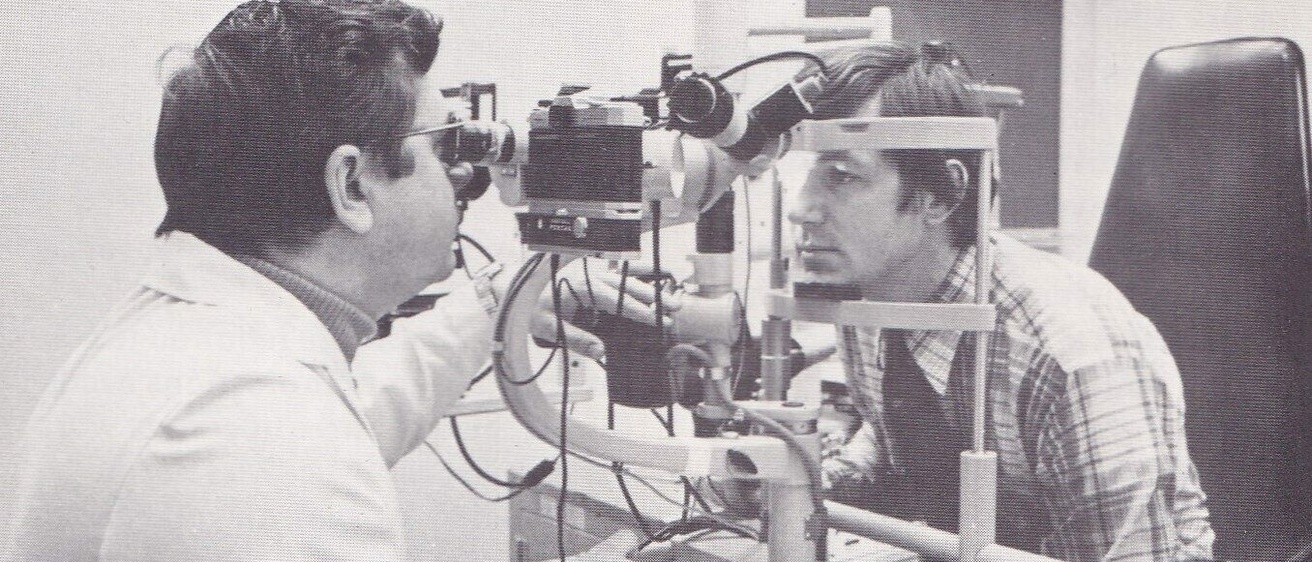
For the past 70 years, Iowa Lions Eye Bank has been the only eye bank in the state of Iowa and serves all 99 counties. Our main office and laboratory are in Coralville, while our satellite location is in Altoona. The Coralville location provides service to Eastern Iowa, while the Altoona location serves Western Iowa.
Iowa Lions Eye Bank is part of the Department of Ophthalmology and Visual Sciences at University of Iowa Health Care and is affiliated with the Iowa Lions, works closely with Iowa Donor Network and other partners, and is accredited by the and the Eye Bank Association of America (EBAA) and the Food and Drug Administration (FDA).
Explore Our Historical Timeline
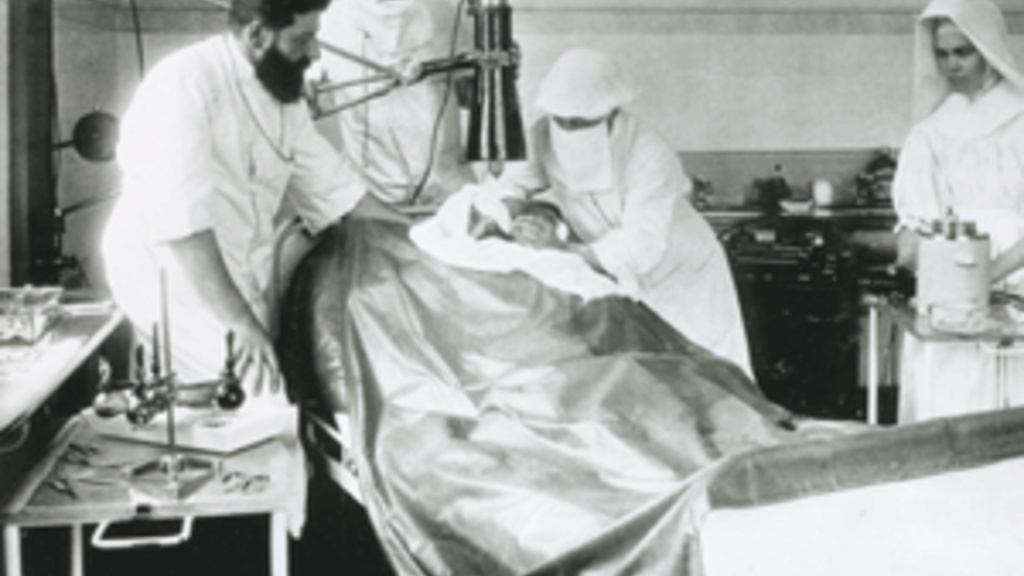
First Successful Human Corneal Transplant
December 7, 1905Austrian-Hungarian Dr. Eduard Zirm performs the first successful human corneal transplant in Olomouc, now part of the Czech Republic.

First US Eye Bank
1944Dr. Townley Paton establishes the first eye bank in the United States, the Eye Bank for Sight Restoration in New York City. Among its earliest supporters are native Iowan and former president Herbert Hoover.
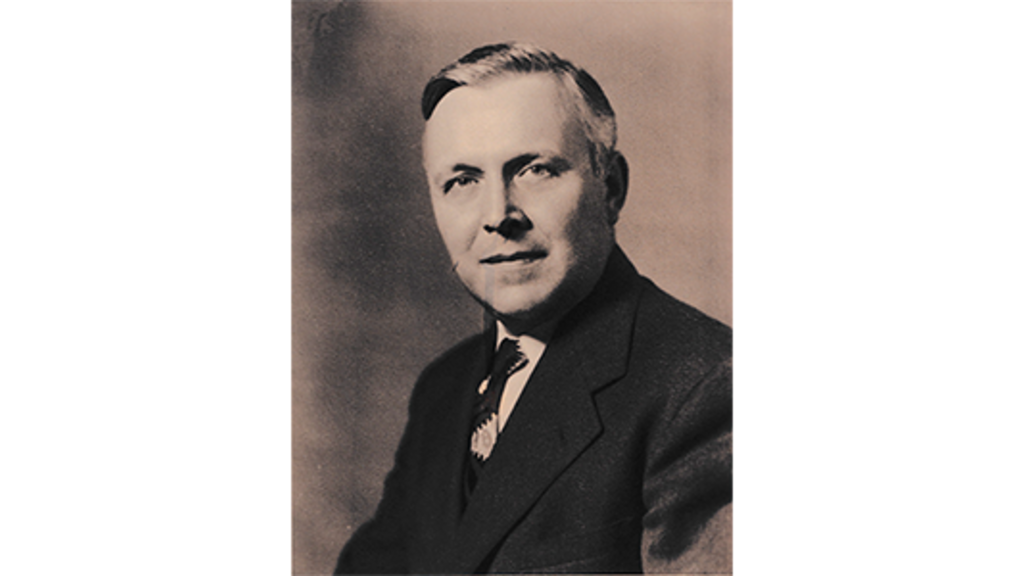
Dr. Braley Returns to Iowa
1950Dr. Alson E. Braley, who trained in New York City with early corneal transplant pioneer Ramon Castroviejo, returns to Iowa as chair of the University of Iowa Department of Ophthalmology. He soon performs the first corneal transplants in Iowa.
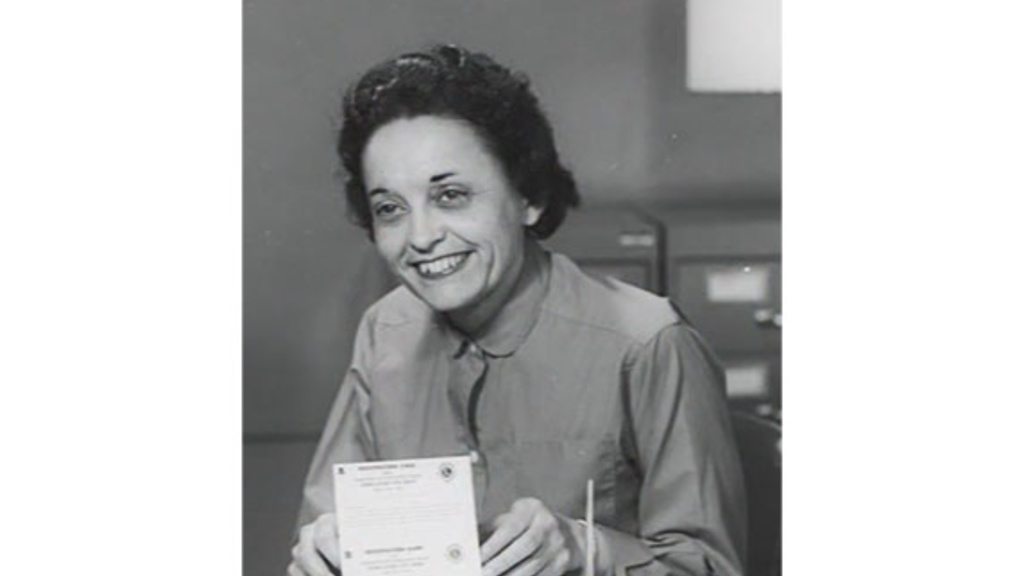 July 26, 1954
July 26, 1954Ruth Fisher, a young woman from Kalona, has two corneal transplants, one on July 26, and one on Oct. 21. Both are performed by Dr. Braley, with tissue obtained from the eye bank in New York.
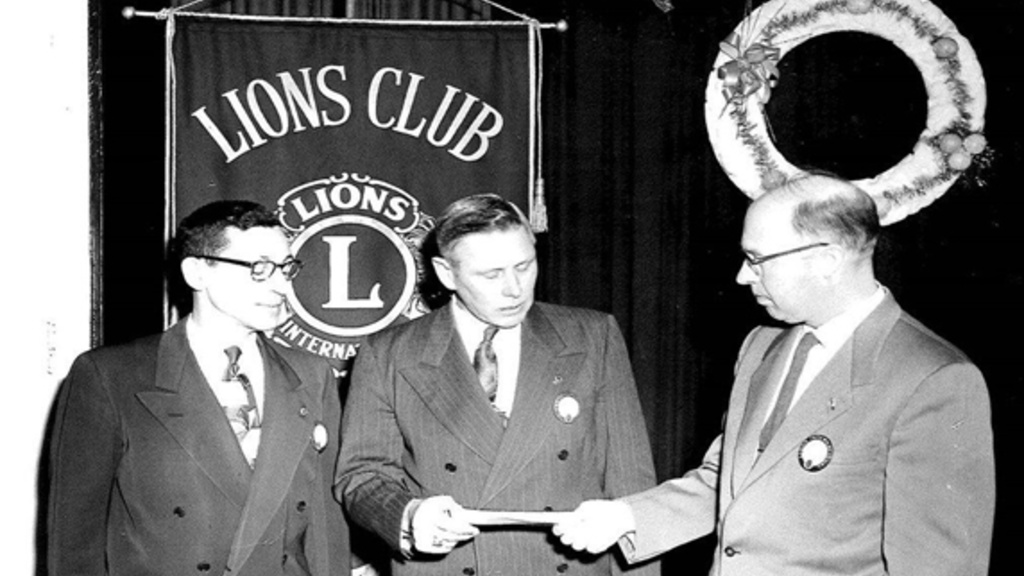
Dr. Braley Proposes Iowa Eye Bank
October 17, 1954Dr. Braley sees the need for an eye bank in the Midwest and approaches the Lions Clubs of Iowa during their state convention in Fort Dodge, asking for financial support. The Lions accept the challenge to raise money for the eye bank and help ensure the passage of state legislation allowing a person to will body parts to a medical school or an eye bank in Iowa.
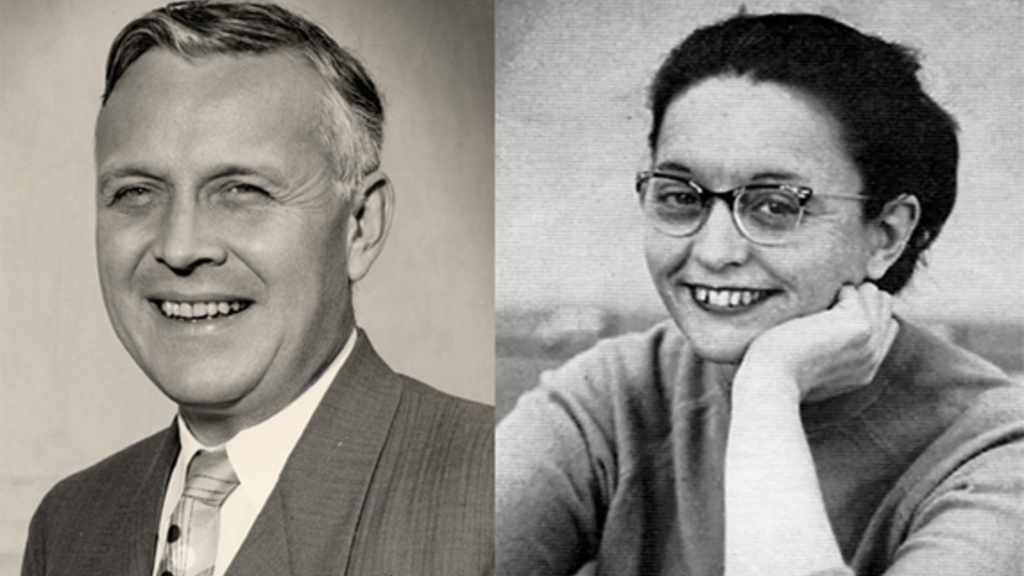
Iowa Lions Eye Bank Established
September 13, 1955Iowa Lions Eye Bank is established with $10,000 raised by the Iowa Lions Clubs. Dr. Braley becomes the first medical director. Ruth Fisher serves as the first secretary, and later executive director. The eye bank office is on the second floor of the University of Iowa Hospital (now known as University of Iowa Health Care Medical Center-University Campus).

Eye Bank Committee Forms
October 1955The American Academy of Ophthalmology and Otolaryngology (now the American Academy of Ophthalmology, or AAO) forms a committee on eye banks at their annual meeting, with ILEB appointed as one of ten eye banks represented on the committee just one month after ILEB’s founding.
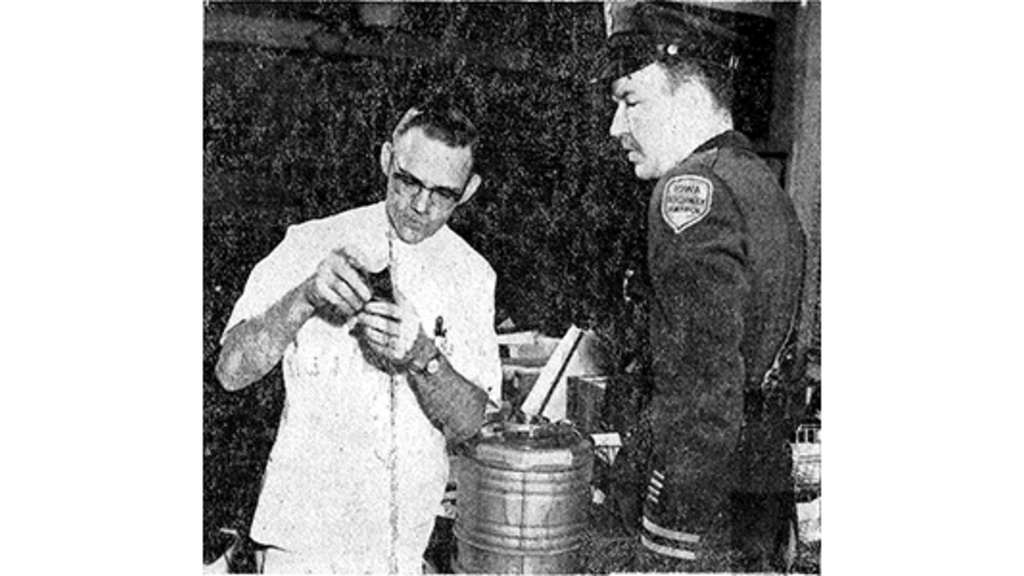
First Cornea Donation in Iowa Lions Eye Bank History
December 11, 1955Carl Oscar Pearson, 67, of Moline, passes away and his eyes are donated to Iowa Lions Eye Bank. This is the first donation in Iowa Lions Eye Bank history. The eyes are transported by Highway Patrolman Richard Reddick to University Hospital, where they are accepted by Dr. C.C. Morledge of the ophthalmology department. The next morning, Dec. 12, Dr. Braley transplants Pearson’s corneas into the eyes of Dr. Robert P. Woods, a neurosurgeon from Topeka, Kansas. This is the first transplant ever done using tissue from Iowa Lions Eye Bank.
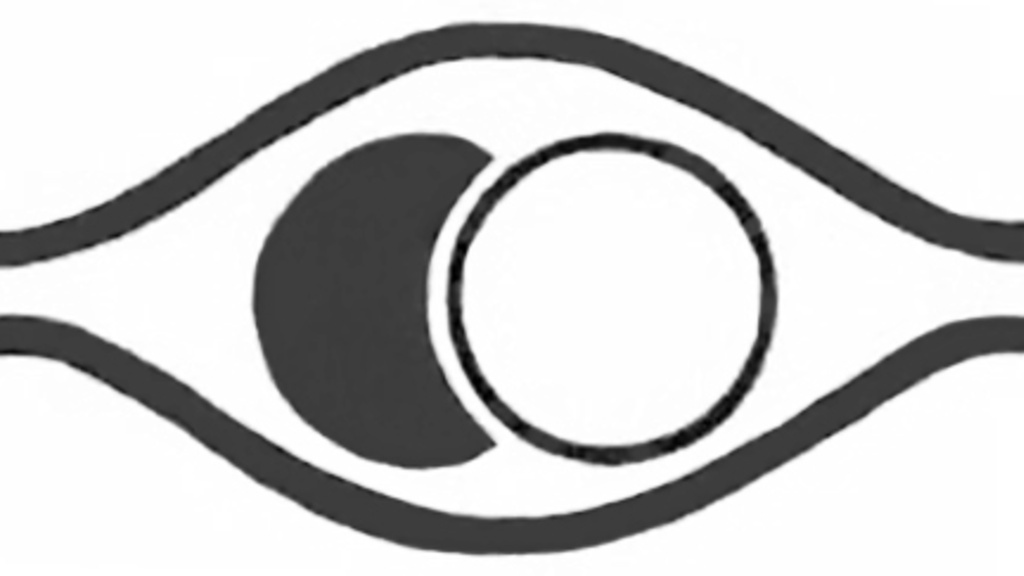
Eye Bank Association of America
1961Iowa Lions Eye Bank is one of ten founding members of the Eye Bank Association of America. (EBAA) Iowa Lions Club member Ted Hunter, one of the leaders in the founding of Iowa Lions Eye Bank, is named to the EBAA Board of Directors.
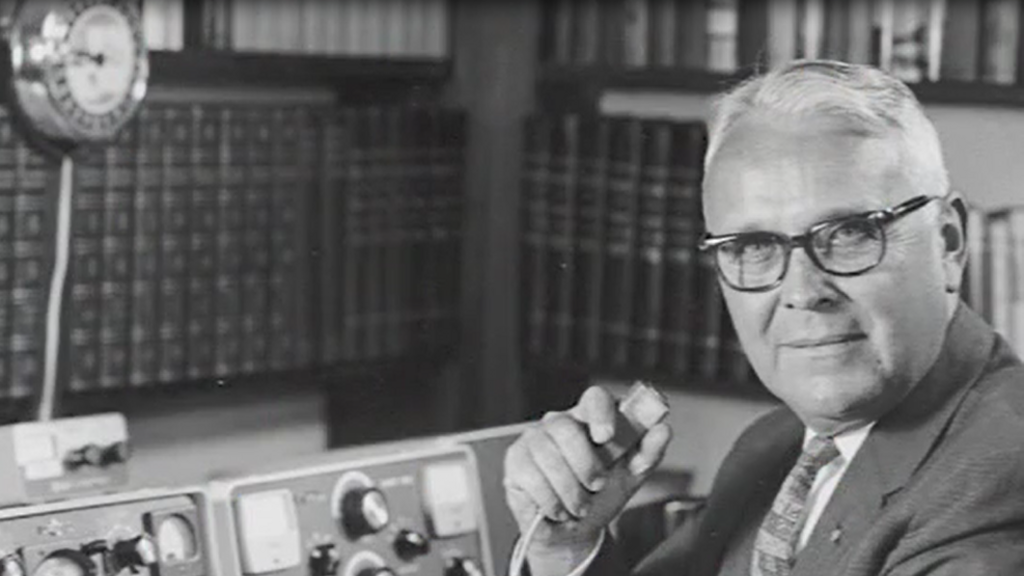
Eye Bank Network is Established
December 20, 1962Dr. Alson Braley and Ted Hunter establish the Eye Bank Network, to coordinate the exchange of donor eyes between eye banks.
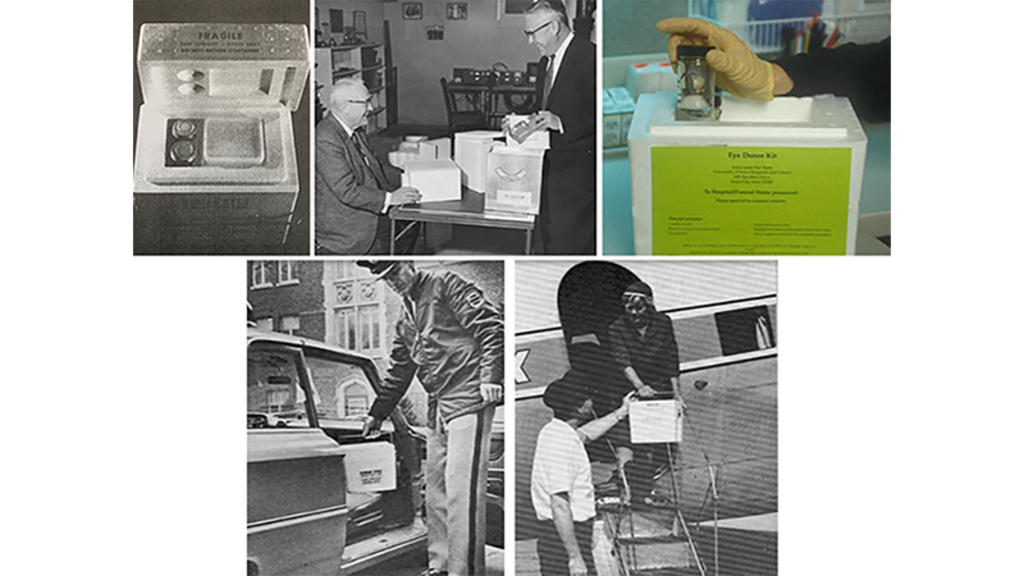
Eye Bank Shipping Containers
1963After eight years of analyzing eye bank shipping containers, which were made of aluminum, Ted Hunter develops a new model made from polystyrene foam. It is sturdy, lightweight, resistant to temperature change, and costs only $3.50. Other eye banks also adopt this type of container, which becomes the standard method of transporting ocular tissue.
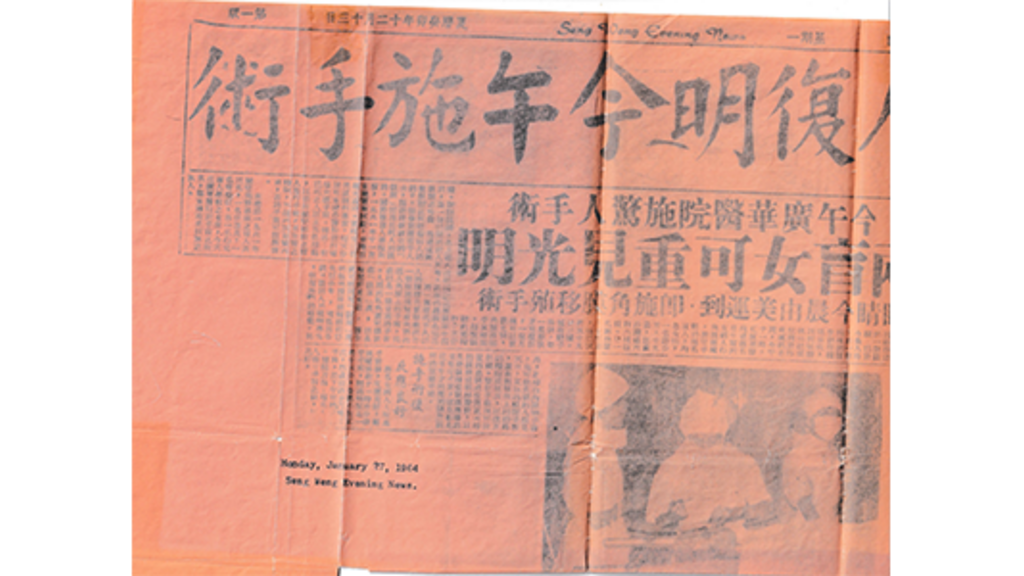
Eyes are Sent to Hong Kong
January 24, 1964Two eyes are sent to Hong Kong in the first recorded international delivery of ocular tissue from Iowa Lions Eye Bank.
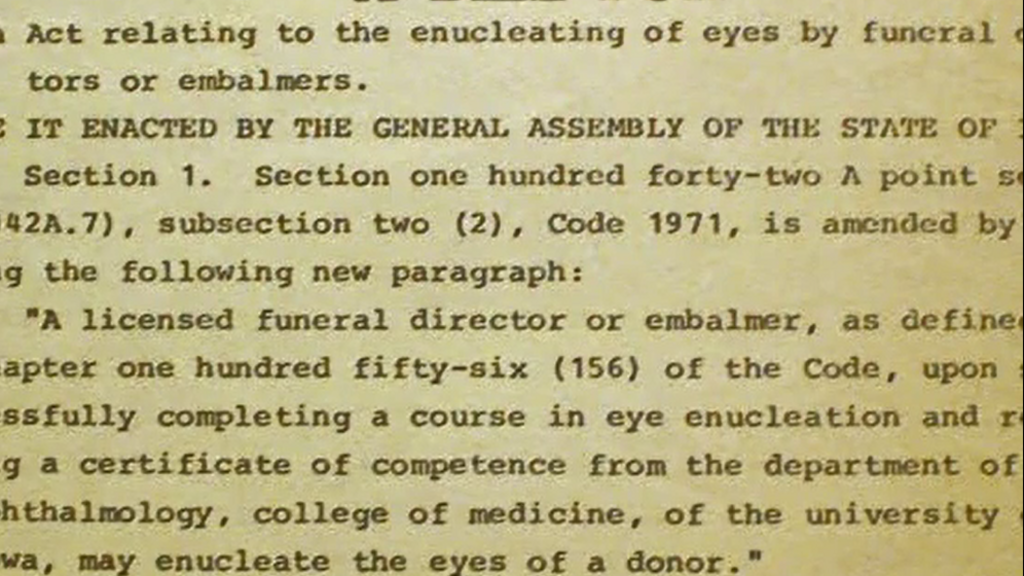
Funeral Directors Conduct Recoveries
July 1968Iowa becomes the first state in the nation to pass a bill allowing funeral directors to enucleate eyes. Before, only physicians could recover eyes from deceased donors. This law came into being because of a shortage of physicians in some parts of Iowa.
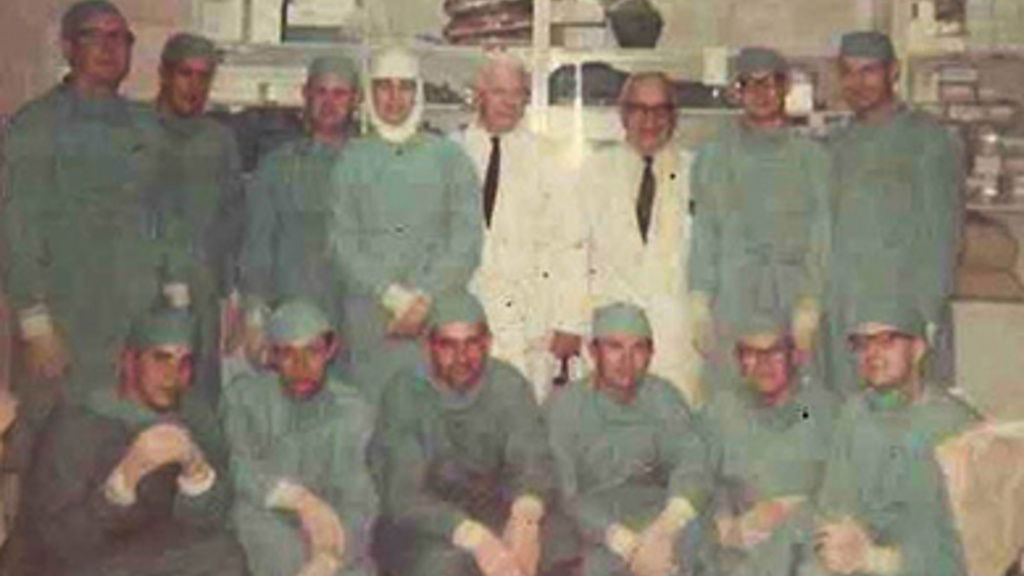
Eye Enucleation Course for Morticians
March 22-23, 1969The first course for morticians to learn how to enucleate eyes is held at University of Iowa. The first course included 11 funeral directors.
Dr. Braley Becomes President-Elect of EBAA
October, 1969Dr. Braley becomes president-elect of the Eye Bank Association of America Board of Directors and takes office in September 1971.
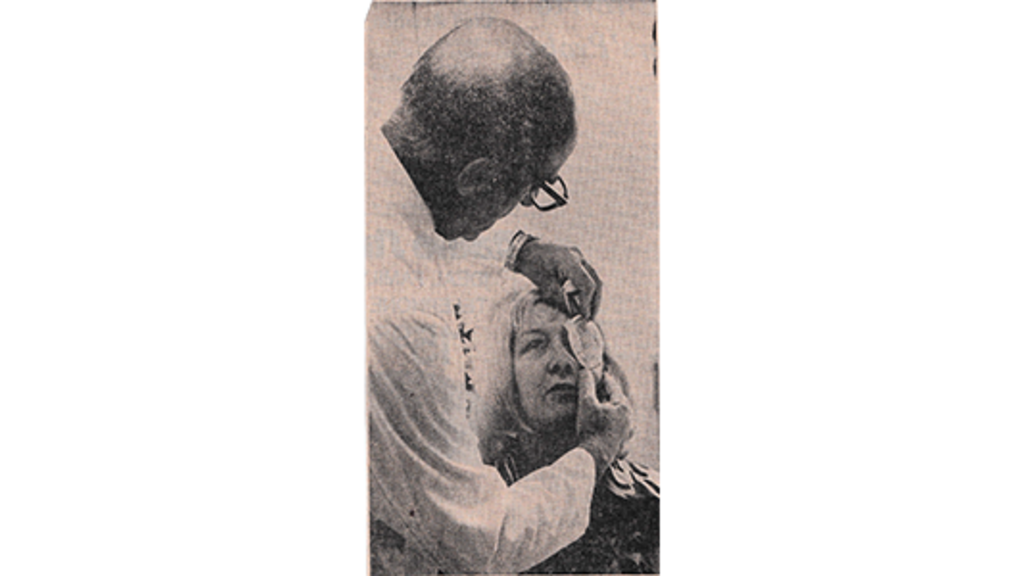
1000th Transplant
November, 1973The 1,000th transplant arranged by Iowa Lions Eye Bank is performed on Mrs. Irene Borman, 43, of Hamilton, Ontario.
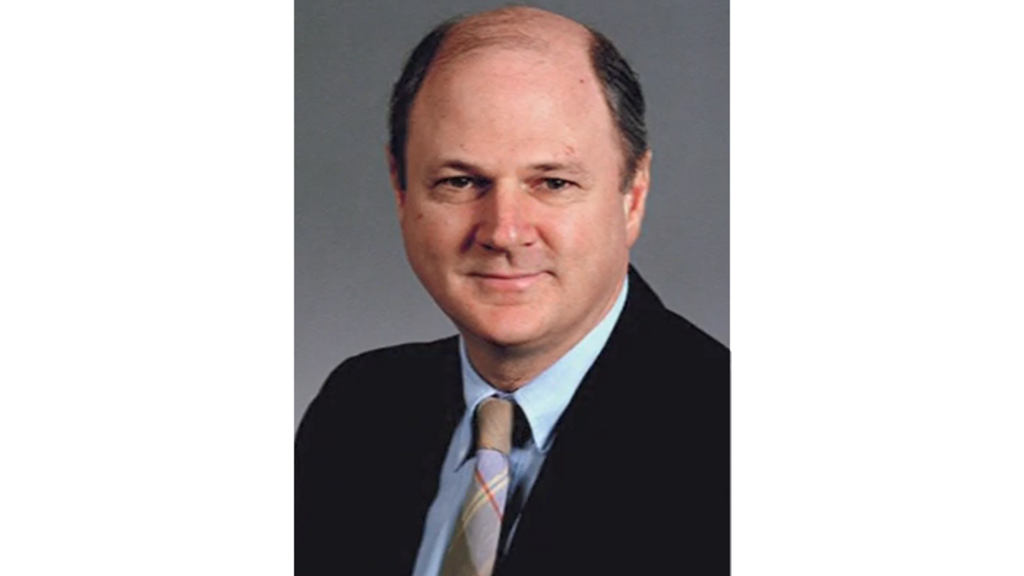
Dr. Jay H. Krachmer
1975Dr. Jay H. Krachmer is named Iowa Lions Eye Bank’s medical director.
EBAA Inspection
1980ILEB undergoes its first EBAA accreditation and inspection.
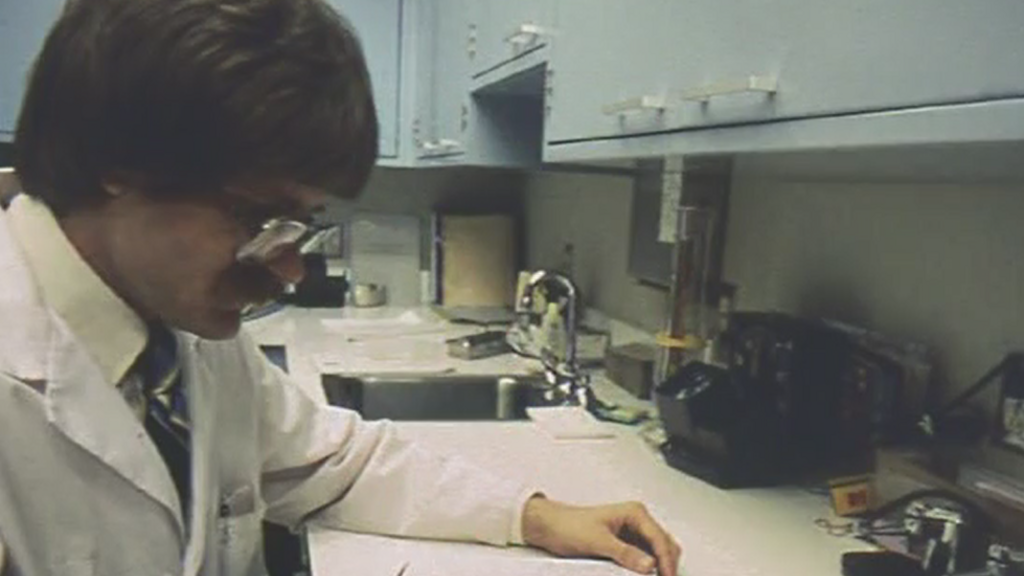
First Iowa Lions Eye Bank Technician
1981As the volume of procured corneal tissue increases, Dr. Krachmer sees the need for an official eye bank technician and hires Bob Taylor to fill the position.
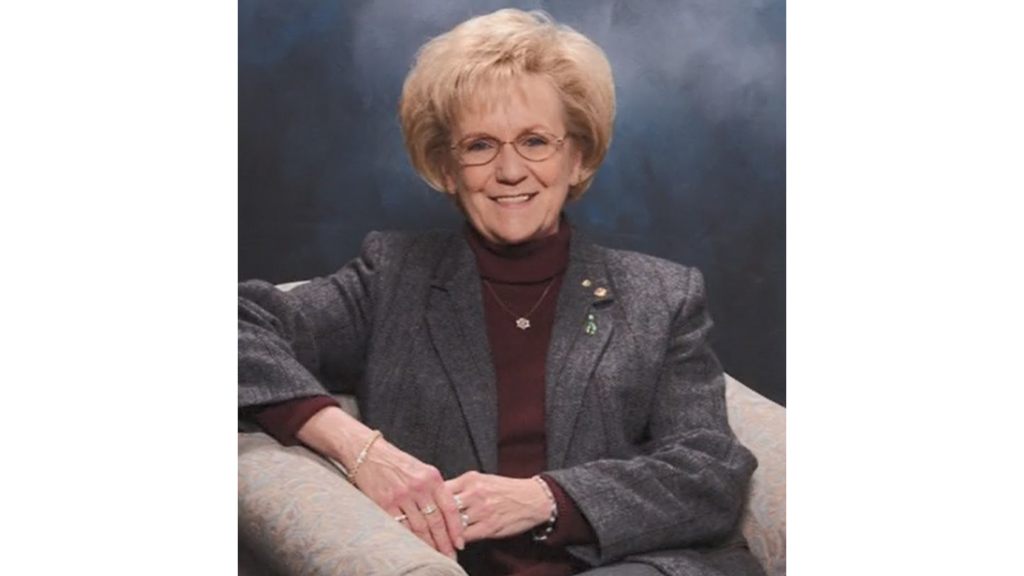
Pat Mason
January, 1983Ruth Fisher retires after 27 years at the Eye Bank. Pat Mason succeeds her as Executive Director.
Dr. Jay Krachmer Becomes Chairman of the Board of Directors
July 1, 1986Iowa Lions Eye Bank Medical Director Dr. Jay Krachmer becomes chairman of the Board of Directors of the Eye Bank Association of America.
New Uniform Donor Card
August, 1988The two-part eye donor registration card used since 1955 is replaced with a new Uniform Donor Card. This allows Iowans to specify other organs they wish to donate and eliminates the need for cards to be kept on file at the eye bank.
Wait List Eliminated
1990Iowa discontinues its corneal waiting list. Surgeons are now able to schedule surgeries for patients as needed because ILEB can procure enough tissue to meet surgical needs.
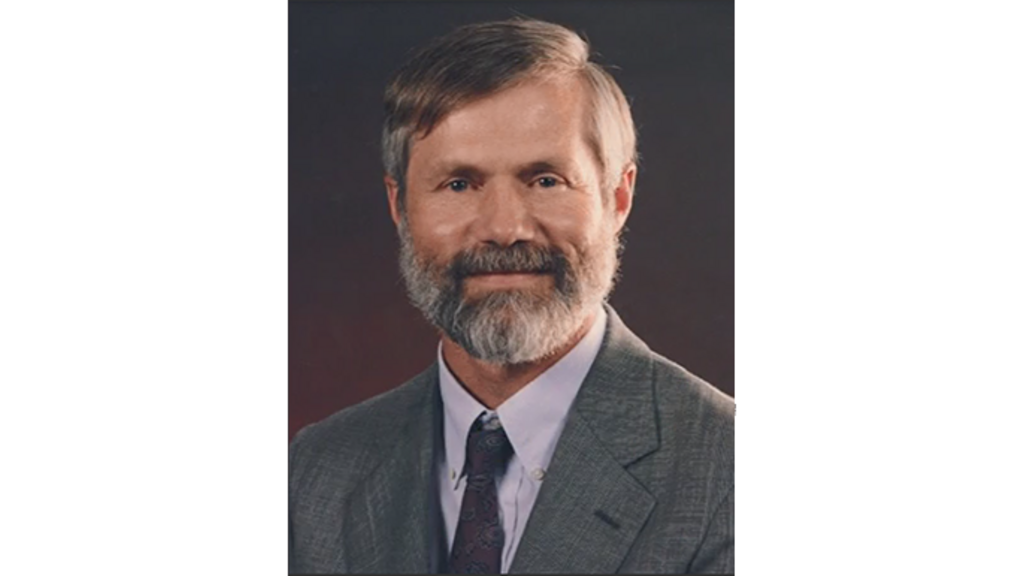
Dr. William D. Mathers
July, 1992Dr. William D. Mathers is appointed as ILEB’s Medical Director.
FDA Involvement
1993The FDA becomes involved in eye and tissue banking.

Dr. John Sutphin
November, 1998Dr. John Sutphin becomes ILEB’s Medical Director
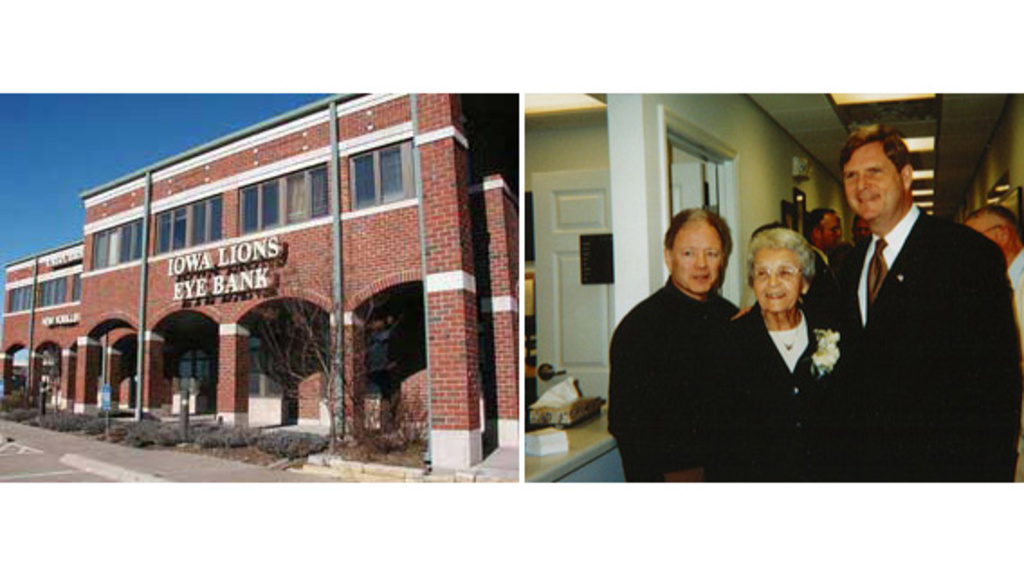
New Location
December 18, 2001The Iowa Lions Eye Bank moves from its office in the University of Iowa Hospital to 2346 Mormon Trek Boulevard, Suite 1500, Iowa City, and adopts a new logo. There are now seven full-time and nine part-time employees.
Eye Bank Employees Perform Recoveries
Early 2000'sDue to changing regulatory requirements, the eye bank ended the volunteer enucleator program and transitioned to the use of eye bank employees to perform recoveries across the state.

Cindy Reed
August, 2004Cindy Reed becomes ILEB’s Executive Director.
ILEB's 50th Anniversary
September, 2005Iowa Lions Eye Bank celebrates its 50th anniversary. In that time, more than 50,000 Iowans have been eye donors.
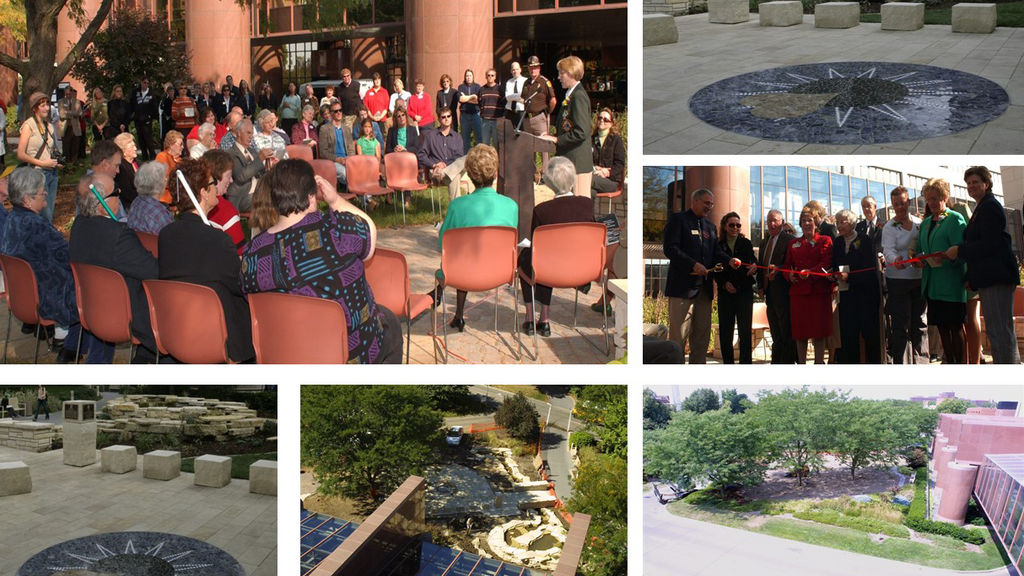
Iowa Lions Donor Memorial and Healing Garden
October 10, 2005The Iowa Lions Donor Memorial & Healing Garden opens outside University of Iowa Hospitals & Clinics. The garden has 994 paving stones that can be purchased and dedicated to donors.
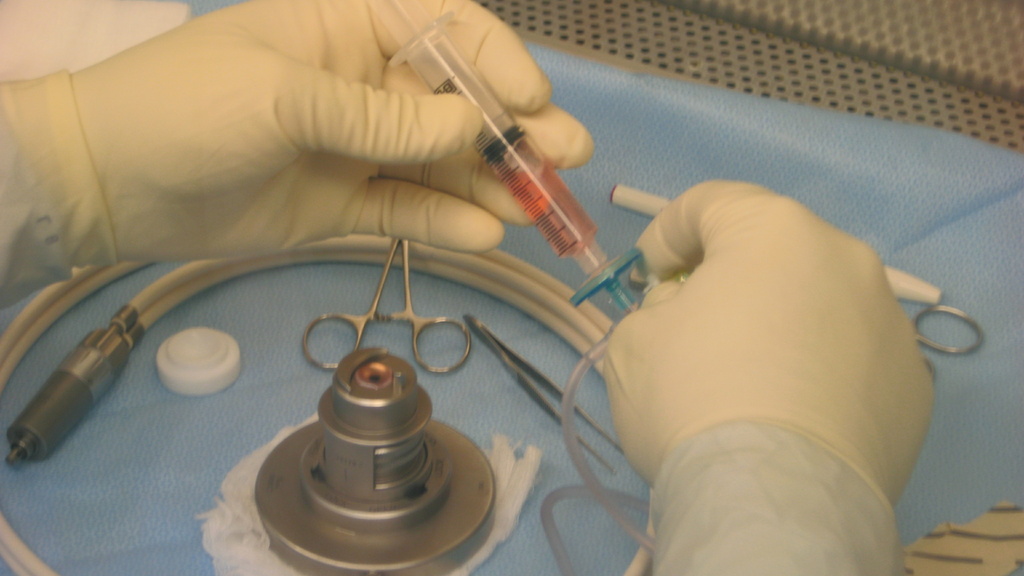
DSAEK Tissue Processing
April, 2006ILEB becomes the second eye bank in the United States to prepare Descemet's Stripping Automated Endothelial Keratoplasty (DSAEK) tissue for surgeons. DSAEK is a cornea transplant technique that replaces just the damaged cell layer rather than the entire thickness of the cornea. DSAEK surgeries heal much faster and stronger, with better visual recovery for patients. ILEB staff goes on to train technicians from other eye banks in DSAEK preparation to increase availability of such tissue.
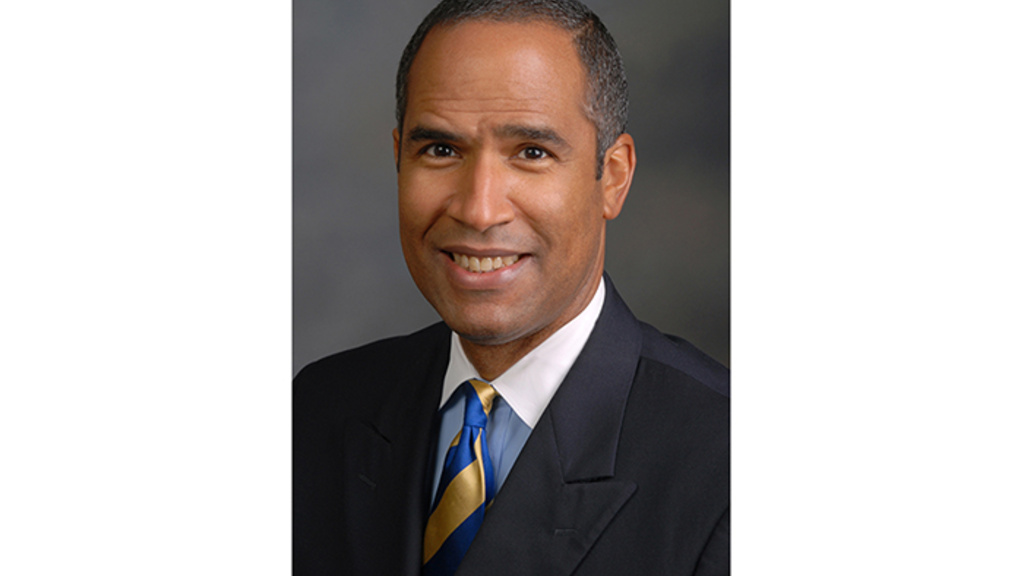
Dr. Kenneth Goins
December, 2006Dr. Kenneth Goins is appointed as ILEB’s Medical Director.
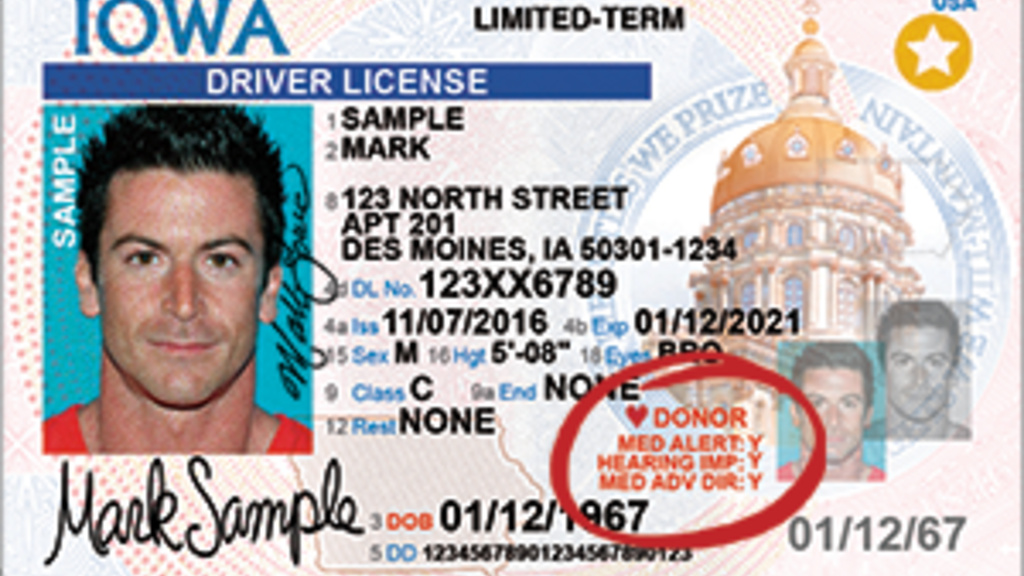
Driver's License as Legal Donor Consent
July 1, 2007When Iowans say "yes" to becoming a donor when receiving or renewing their Iowa driver's license or state ID, their license or ID is now their legal consent for eye, organ and tissue donation.
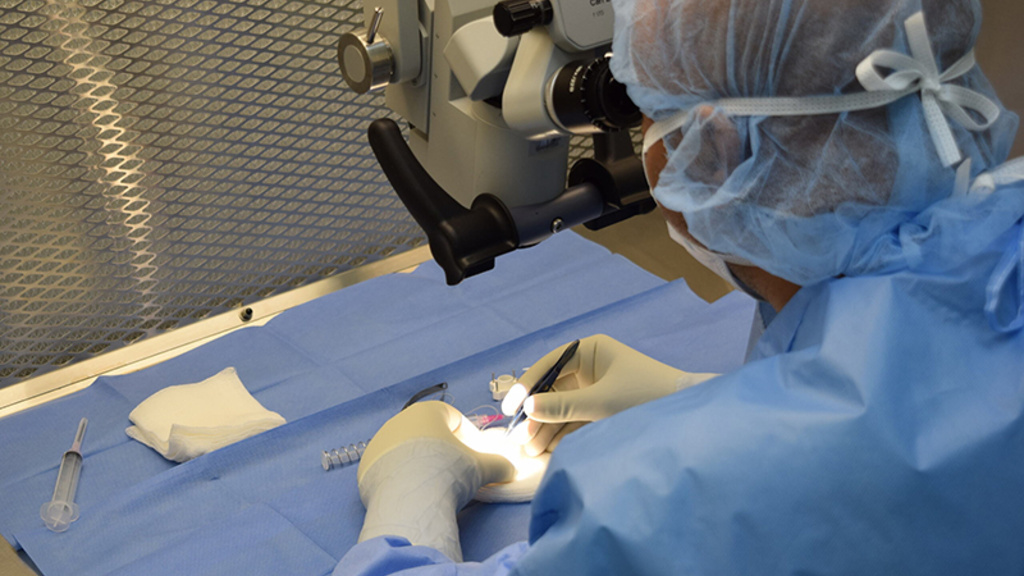
DMEK Tissue Processing
2009ILEB becomes the first in the US to prepare tissue for Decemet's Membrane Endothelial Keratoplasty (DMEK) surgery in an eye bank setting, under EBAA medical standards.
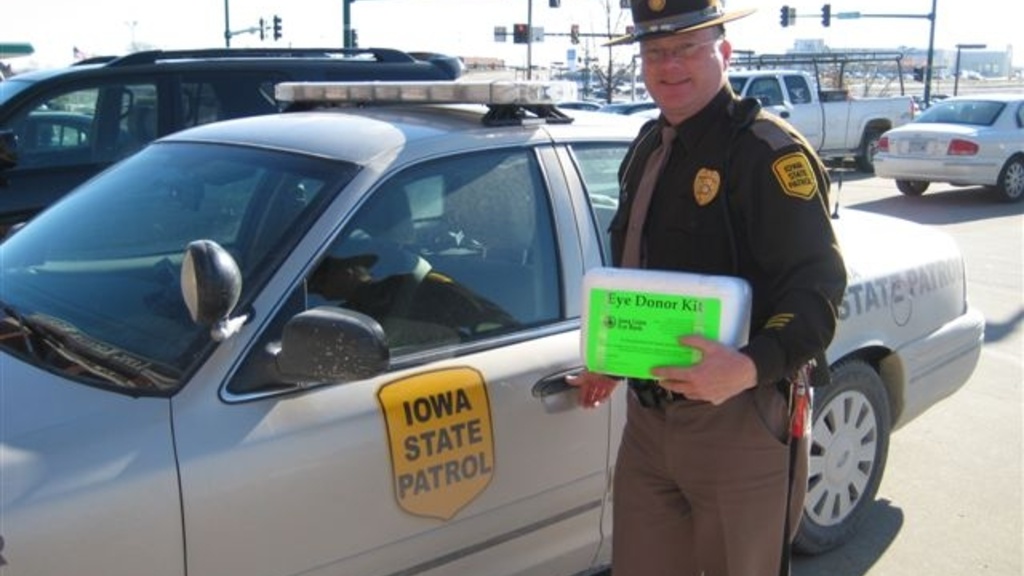
ILEB Seeks New Tissue Transport
March 2009Due to budget cutbacks, personnel shortages, and increased numbers of daily transports, Iowa State Patrol discontinue their statewide relays of donor eyes for ILEB.
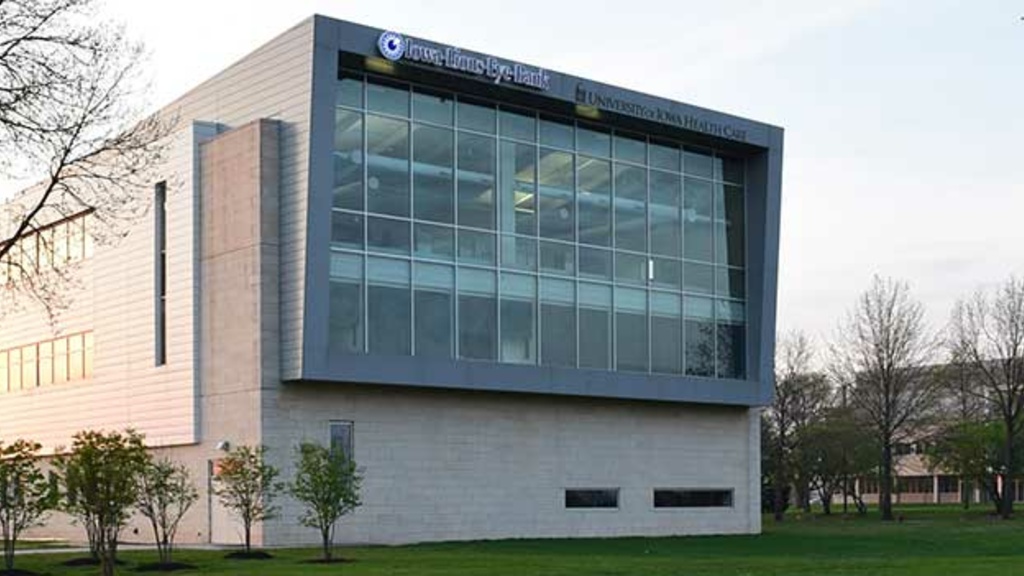
Bigger and Better
2013ILEB moves to 14,000 square feet of space on the third floor of the BioVentures Center in Coralville, with all services housed in the new space after two expansions at its previous location on Mormon Trek Boulevard in Iowa City.
First Eye Bank-Focused Research Project
2014Having provided tissues for other researchers for decades and collaborating on studies with a clinical focus, ILEB's research team undertakes its first eye bank-centered research project. The study looks at how diabetes increases risks in DMEK graft preparations within the eye bank setting.
IDN Tech Training
June, 2017ILEB begins training Iowa Donor Network organ and tissue recovery technicians to recover eyes on shared cases where the donor is appropriate for both cornea and organ/tissue donation.
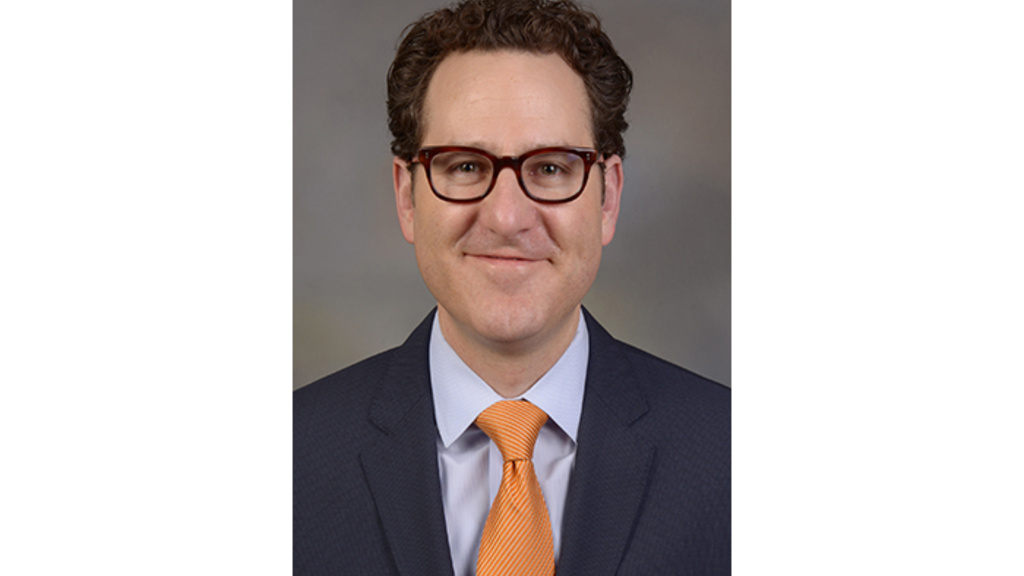
Dr. Mark Greiner
July, 2018Dr. Mark Greiner is appointed Medical Director.
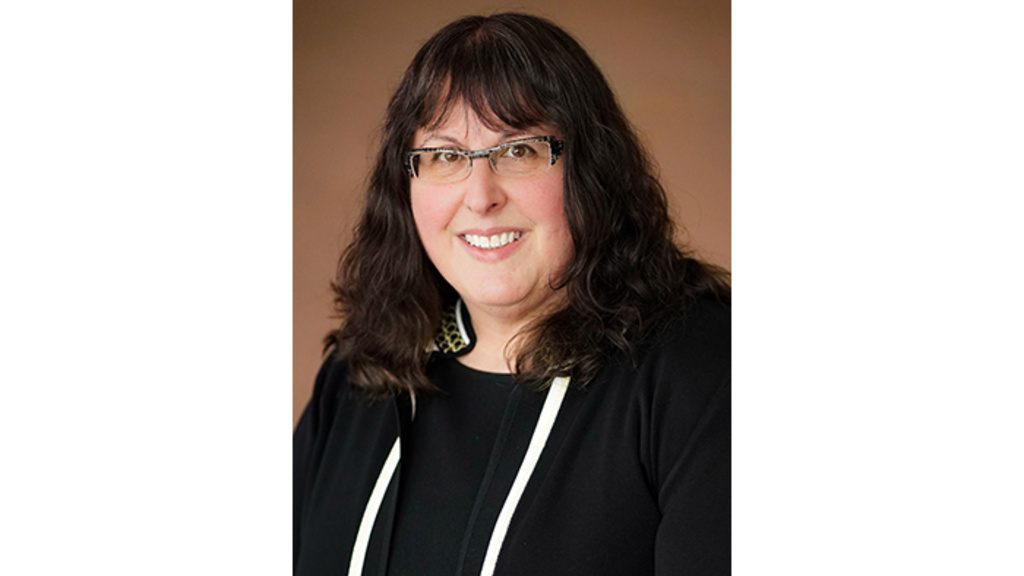
Esther Baker
January 7, 2019Esther Baker becomes ILEB’s Executive Director.
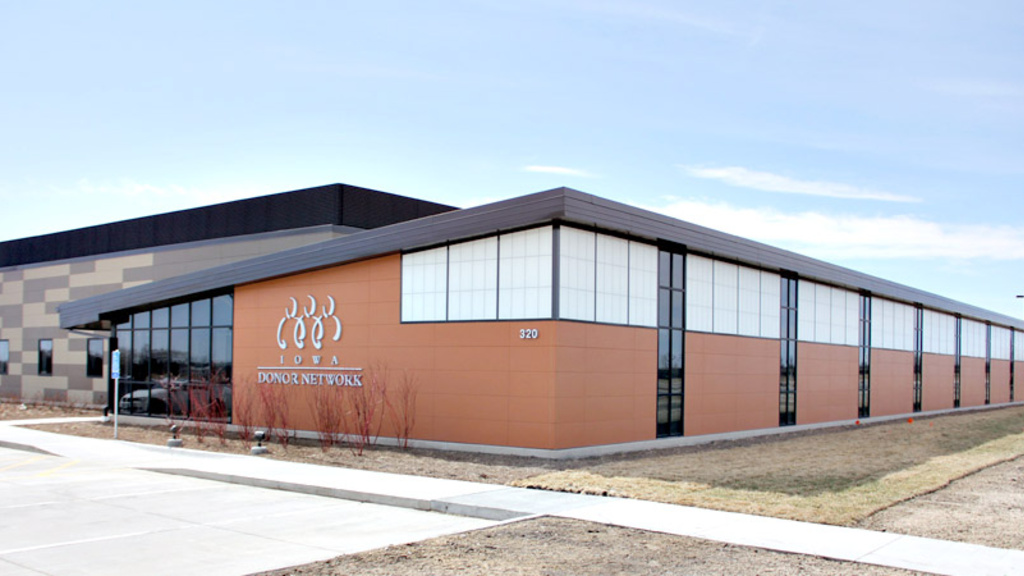
ILEB Satellite Office
October 20, 2020The ILEB satellite office in Des Moines moves into the Iowa Donor Network building in Altoona.

